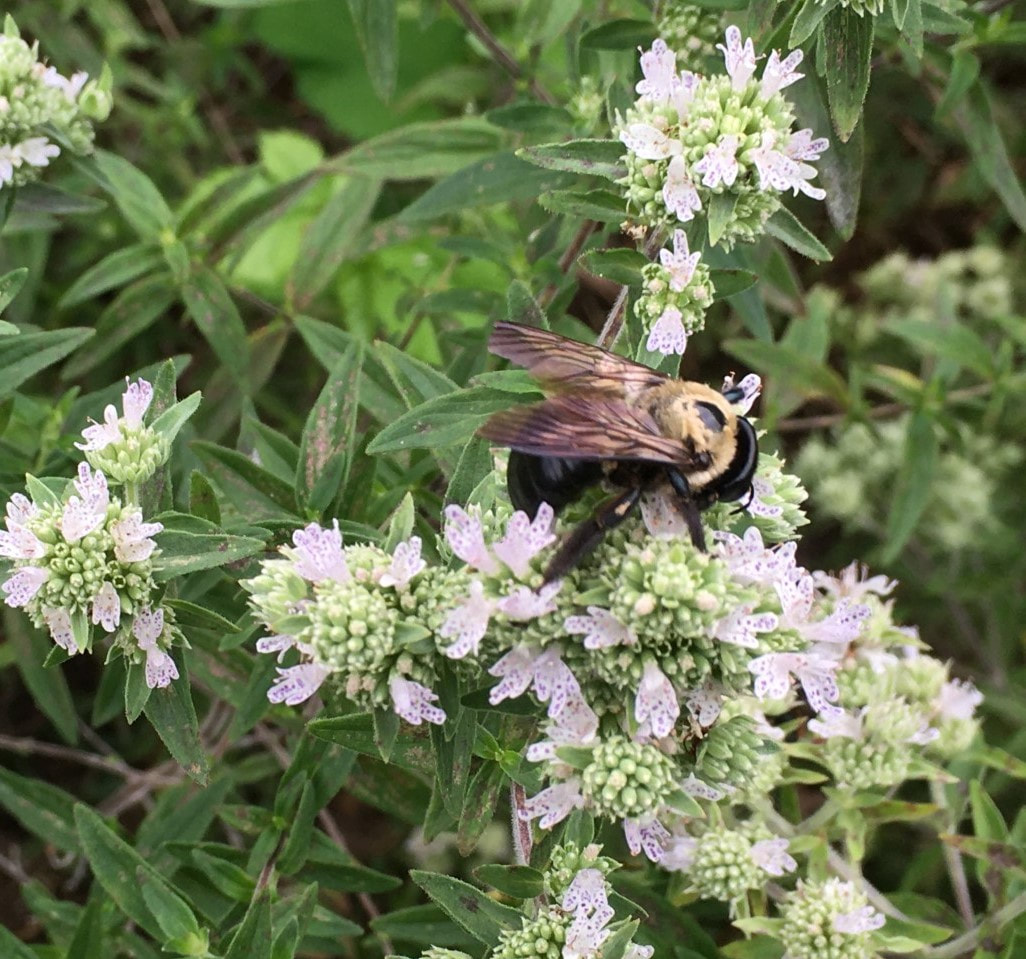Mountain mint is a party on a plant! Bees, butterflies, moths, beetles and other beneficial insects all share in the bounty of nectar offered by Pycnanthemum spp.
The Snetsinger Butterfly Garden showcases four different species of native mountain mint, all of them stellar native plants for attracting a flurry of pollinator activity. Research has found mountain mint to be one of the most beneficial plants for supporting our pollinator pals. The tiny magenta-spotted white flowers that bloom against the silvery green leaves might seem insignificant to our human eye, but they’re like a big neon sign for insects seeking nectar.
As you may have guessed, mountain mints are in the mint family (Lamiaceae), easily identified by their square stems and aromatic leaves. Savvy gardeners might be wary of planting a “mint” in the garden, knowing their aggressive growing habits. But unlike culinary mints that can run amok, our native mountain mints are better behaved and easier to manage. Different species vary in their aggressiveness. For example, Virginia Mountain Mint (P. virginianum) seems to be more clump forming and less spreading.
Celebrate our pollinators by planting mountain mint, a guaranteed garden party success!


 RSS Feed
RSS Feed